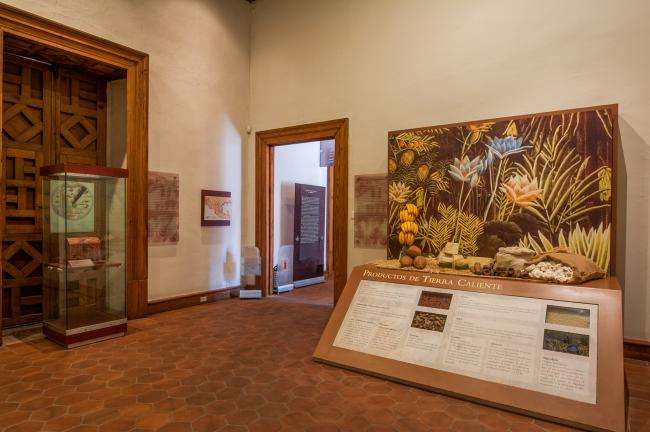
The Bishopric of Michoacán
Sala
Through visual representations, this section explores the expansion of the Michoacán diocese beyond the former Tarascan domain. Its political and religious capital, Valladolid (now Morelia), benefited economically from the fertile Tierra Caliente region and the prosperous Bajío, making it one of the wealthiest bishoprics in New Spain.
Territory and Economy
During the colonial period, the bishopric of Michoacán encompassed a vast and productive territory that, between the late 16th and 18th centuries, included present-day Michoacán, Guanajuato, Colima, and parts of Jalisco, Guerrero, and San Luis Potosí.
The bishopric's territory included diverse geographical zones dedicated to different economic activities. To the north were the rich mining districts of Guanajuato and San Luis Potosí. The Bajío region was known for its fertile lands, pastures, and livestock, while Tierra Caliente and the coast stood out for their varied agricultural and livestock production. In the 18th century, thanks to the development of these regions—particularly the Bajío and Tierra Caliente—the bishopric of Michoacán became one of the most prosperous dioceses in New Spain, ranking just behind Mexico and Puebla.


